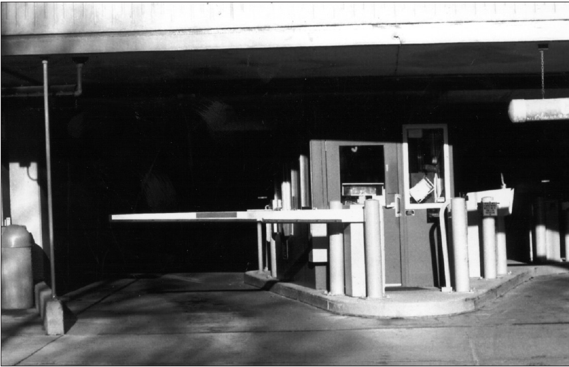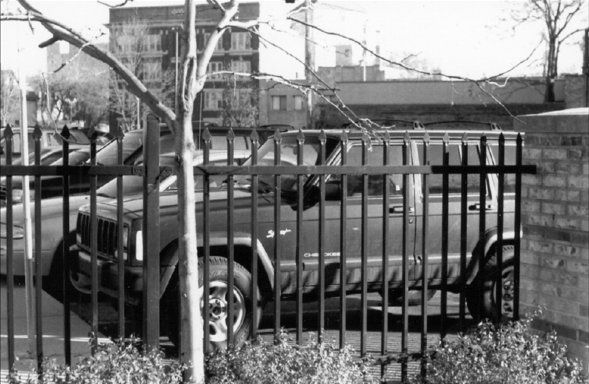Understanding Your Local Problem
The information provided above is only a generalized description of the problem of thefts of and from cars in parking facilities. You must combine the basic facts with a more specific understanding of your local problem. Analyzing your problem is essential for designing an effective response strategy.
You may be dealing with a single parking facility—either a deck or a lot—or with a group of facilities—perhaps a combination of decks and lots. Whatever the case, you will need to identify the specific nature of the problem, whether this is theft of cars, theft from cars, or both.
In most cases, the main problem will be theft from cars, and you should try to determine the kind of offenders involved (e.g., transients, drug addicts or juveniles). On the other hand, if the problem is mainly theft of cars, you will need to determine the purpose, whether for joyriding, for transport or for profit. The principal indicators of this are recovery rates,§ though the model stolen will also help determine the purpose because, as mentioned, certain kinds of thieves favor certain models.10
§ Police recover about 65 percent of stolen cars. This figure is even higher in jurisdictions where juvenile joyriding is the predominant type of car theft.
Knowing who is committing the offenses, and why, helps you decide how difficult they will be to stop. You will also need to understand how they commit the offenses. This will require a careful study of facility security.§§ Comparing facilities can greatly assist in understanding the conditions that facilitate theft. Calculating theft rates per parking space will make your comparisons precise, though counting spaces can be very time-consuming if the parking lot operators or city does not keep records of the number of spaces per facility.
§§ See Association of Chief Police Officers in England and Wales (n.d.) for guidelines for assessing security.
You may need to respecify the problem in light of this information. You may find that you need to focus on the largest component of theft, or on the facilities most at risk. For example, as mentioned, a detailed study of theft from downtown Charlotte parking facilities found that the problem was concentrated in lots, not decks.11 This meant that prevention could similarly be focused on lots.
Alternatively, you may decide that theft from parking facilities is part of a wider problem in your jurisdiction. In that case, the wider problem may need to be tackled, using remedies such as crackdowns on chop shops and pawnshops , or tightened controls at ports and border crossings.
Asking the Right Questions
The following are some critical questions you should ask in analyzing your particular problem of theft, even if the answers are not always readily available. Your answers to these and other questions will help you choose the most appropriate set of responses later on.
Nature of the Thefts
For all thefts:
- Is the problem confined to parking facilities, or is it part of a more general problem of car theft affecting the wider area or jurisdiction?
- When do thefts mainly occur (time of day, day of week, month)?
- What proportion of offenses result in an arrest?
- What kinds of offenders are involved? Addicts? Juveniles? Transients/homeless? Professional criminals?
- What is the ratio of theft of cars to theft from cars?
For thefts of cars:
- Which models are stolen?
- What proportion of stolen cars are recovered?
- Which models are less likely to be recovered?
- How soon are they recovered?
- Where are they recovered?
- Are they damaged?
- Have items been stolen?
For thefts from cars:
- Are there favored methods of gaining entry to cars?
- What is stolen? Where and how is it fenced?
Conditions Facilitating Theft
For all parking facilities:
- How many other parking facilities are near the one(s) where the thefts occur?
- How do theft rates compare between facilities?
- Which groups are the principal users of the facilities? Commuters? Shoppers? Young people?
- Is parking free? If not, how are fees collected?
- Are parking attendants present?
- Are they full-time, or there for only part of the day?
- Do they have an active security function?
- Do they have telephones to summon assistance?
- How regularly do the police or security guards patrol the facility?
- Is closed-circuit television (CCTV) in use? Does it cover the whole facility? Is it effective at night? Who is monitoring it?
- Is the facility used at night? If so, is poor lighting a factor in theft?
- Do drivers frequently come and go during the day?
- Is lack of natural surveillance a factor?
- Is victim carelessness a contributory factor?
- Which places within the facility are at greatest risk?
For decks (and underground garages), specifically:
- How are fees collected?
- Do exiting drivers need an electronic pass or valid ticket?
- Can exit tickets be obtained other than by entering in a vehicle?
- Can pedestrians access the deck without passing attendants?
- Are pedestrian doors inaccessible from outside the deck?
- Do thefts disproportionately occur on the upper levels?

Attendants and electronic barriers provide good control of the exit at this deck. Credit: Kip Kellogg
For lots, specifically:
- Are entrances and exits staffed?
- What proportion of the perimeter is fenced?
- Do the fences prevent people from wandering through the lot?
- Do the fences present an effective barrier to determined thieves?
- Do the fences or foliage screen the lot from the view of passersby?
- Do passing motorists and pedestrians provide natural surveillance of the lot?
- Can the lot be viewed from nearby buildings?
- Are parts of the lot screened from any natural surveillance?

Fencing around parking lots should allow for visibility into the lot. Credit: Kip Kellogg
Measuring Your Effectiveness
Measurement allows you to determine to what degree your efforts have succeeded, and suggests how you might modify your responses if they are not producing the intended results. You should take measures of your problem before you implement responses, to determine how serious the problem is, and after you implement them, to determine whether they have been effective. All measures should be taken in both the target area and the surrounding area. (For more detailed guidance on measuring effectiveness, see the companion guide to this series, Assessing Responses to Problems.)
The following are potentially useful measures of the effectiveness of responses to thefts of and from cars in parking facilities:
- Reduced theft reports to the police
- Reduced theft reports to lot operators
- Reduced theft reports to car insurance companies
- Increased calls for service (reflecting more witnesses to theft)
- Increased apprehensions of suspects
- Less evidence of glass from broken windows or windshields
- Less evidence of poorly secured cars or items left in view
- Reduced vacancy rates for monthly slots
- Increased monthly lot income
- Higher proportion of spaces occupied
- Greater perception of security among those using the facilities
Free Bound Copies of the Problem Guides
You may order free bound copies in any of three ways:
Online: Department of Justice COPS Response Center
Email: askCopsRC@usdoj.gov
Phone: 800-421-6770 or 202-307-1480
Allow several days for delivery.
Email sent. Thank you.
Thefts of and from Cars in Parking Facilities
Send an e-mail with a link to this guide.
* required
Error sending email. Please review your enteries below.
- To *
Separate multiple addresses with commas (,)
- Your Name *
- Your E-mail *
Copy me
- Note: (200 character limit; no HTML)
Please limit your note to 200 characters.
